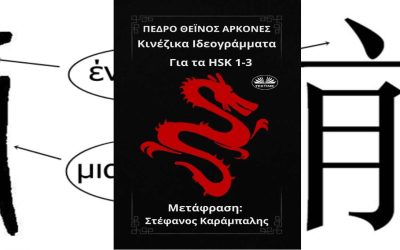The Bulang are one of the oldest populations in the Southwest of Yunnan Province. They are considered one of the aboriginal inhabitants of this province, where they could have lived for more than two thousand years. They inhabit this mountainous region that forms the Sino-Burmese border since long before the border existed: steep mountains, rainforest and difficult life.
Currently they are about 98,000 people in China, and a few more scattered in the neighboring countries, especially Burma, where they live in the border areas with China, usually in lands located more than 1500 meters above sea level. Outside China they are known as Palaung, and due to the different experiences they have lived through throughout their history, they present important differences from those living in China. The latter have also developed two different cultures: those who live in Xishuangbanna, one influenced by the Dai culture, and the Bulang who live further north, in Simao and Lincang, another influenced by the Han Chinese and the Yi.
I like this brief description of the history of the Bulang provided by Xi Chunai: «The process of formation and development of the Bulang is a process of adaptation and the search for opportunities for survival in the process of natural and social change. To survive, they have formed their own livelihoods that can be adapted to the natural environment; to develop, they have assimilated the compatible cultural traits of the Dai, Han and Yi. They have moved from a hunting and gathering society to an agricultural society, from a mountainous region to urban areas. In this process, they are constantly adjusting their own culture so that it develops in the course of constant adaptation.»
Location:
The Bulang of China live in the mountainous areas near the Mekong River (called Lancang in China). Already within the tropics but at considerable altitudes, the environment is one of dense tropical forest, with few productive plains, as the great plains, if ever they were theirs, are used by the Dai or the Han. Communication through the mountains is difficult in some areas, which has favored the conservation of cultural particularities in some of the more isolated villages.
Administratively, the Bulang are considered to be mainly located in Menghai District (Bulangshan, Bada, Xiding, Qitu and Daluo counties) of Xishuangbanna Dai Autonomous Prefecture. Another important cluster of Bulang population can be found in the districts of Shuangjiang, Yongde, Yunxian, Gengma and Zhengkai in Lingcang Prefecture: and the districts of Langcang, Mojiang and Jingdong in Simao Prefecture.
Denomination
They call themselves differently according to the area they inhabit, and so we can know that those who live in Xishuangbanna call themselves «Bulang». Those who live in Zhengkai and Jingdong call themselves «Wu». Those in Langcang and Wendong are called «Weng hong». Those in Shuangjiang, Yunxian, and Mojiang are called «Awa». While the Chinese and other neighboring villages called them Puman.
The name Bulang is a beautiful adaptation of the name by which they have been known to the Chinese throughout history, and could be related to their self-designation. For Puman 蒲蛮 means the barbarians (蛮) called Pu (蒲). Many other minorities were called by names that had derogatory aspects, since the character for barbarians (蛮) hasthe insect radical 虫. This explains why after the founding of the People’s Republic of China the name was changed to Bulang 布朗 without any derogatory connotations. For Bu 布 means «clothing, extend, declare», and lang 朗 «brilliant». Moreover, since in southern China the sound «m» and «l» are often confused, both names are pronounced almost the same way.
Language
Its language belongs to the Austronesian family, Mon-khemr trunk, Bulang branch or Wa-deang branch. It has two dialects. The one called Aerwa and the Bulang. But since the Bulang population is very mixed with the Han, Dai and Wa, it is common that they also speak one of these three languages. In addition, the linguistic differences between speakers of the same dialect are significant. I have seen Bulang from Bada Mountain communicate in Chinese with other Bulang from Bulangshan, because they do not understand each other in their native languages.
Although officially the Bulang are considered a single national minority, given that during the processes of ethnic identification in the 1950s and 1960s it was sought to group them into large cultural groups, and taking into account their different denominations, the different dialects or languages that they speak, as well as the reality that their culture has evolved differently in the different regions that they inhabit, it would be interesting if more studies were conducted to clarify how many branches, or how many ethnic groups fall under the Bulang category.
Last posts
Zhang Yongzheng, the master of deluding reality
Zhang Yongzheng, the master of deluding reality Reality is an illusion, say Buddhist texts. And each of Zhang Yonggzheng's (Gansu, 1978) works plays with this concept to remind us again and again that there is no immutable reality but a fluid universe of forms that...
The book Hanzi for HSK 1-3 now available in Greek language
The book “Hanzi for HSK 1-3” now available in Greek language This April, the translation of my book Hanzi for HSK 1-3 has been published in the main digital bookstores in Greece. The Greek version of this book, from the pen of Stefanos Karampalis, has been one of...
Portrait of a Mandarin in 1800
Portrait of a Mandarin in 1800 This was the year in which a very interesting book was published, which through 60 portraits, tried to show some aspects of life in China to the western public. A book now in the public domain, from which we adapted "A Mandarin of...







